Cracksealing
Request a QuoteCommercial Cracksealing Services by Rose Paving
Cracksealing is an important preventative asphalt maintenance solution that fights deteriorating pavement and supports the longevity of your parking lot. Asphalt cracksealing also an effective way to minimize damage to your pavement, delay asphalt replacement and maintain the aesthetic of your parking lot.
Rose Paving is the most trusted paving company with over 50 years of experience and offices located across the country. Contact Rose Paving for a free estimate for your parking lot.
What is Cracksealing
Cracksealing is a proactive asphalt maintenance solution that uses a specialized adhesive sealant to fill and seal cracks in pavement. This cost-effective treatment helps prevent further deterioration, protecting the asphalt and extending its lifespan by three to five years.
Signs Your Lot Pavement Needs Cracksealing
If cracks are forming in your pavement, it’s time to take action. Addressing cracking pavement early is crucial because waiting too long can lead to more extensive and costly damage. The sooner you seal pavement cracks, the more you save on future repairs.
Savvy business owners and property managers know that regular pavement inspections and a pavement maintenance plan can help prevent bigger issues down the road. If you notice any of the following types of cracks in your parking lot, contact Rose Paving for a professional cracksealing consultation.
For a downloadable technical specs document for cracksealing, please click here.
Types of Pavement Cracks
Reflective Cracks
Reflective cracks are common in resurfacing projects and can also form in new pavement. They occur when existing cracks or joints in the underlying pavement structure extend upward through the surface layer.
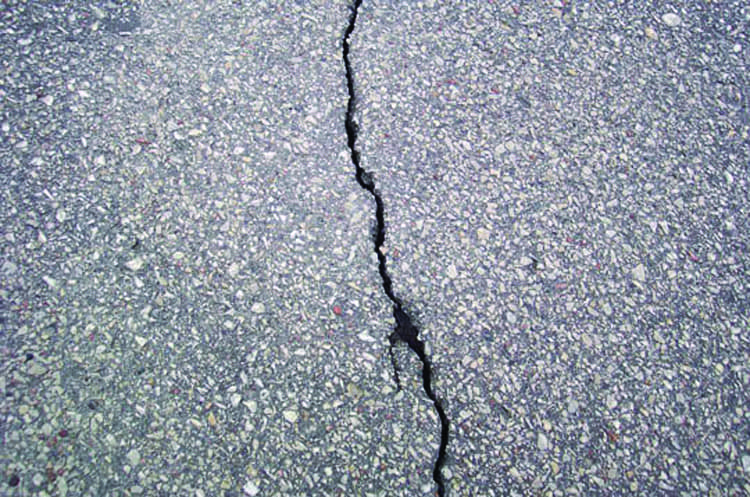
Fatigue or Alligator Cracks
As asphalt pavement ages, it becomes more rigid and more prone to cracking under pressure. This creates tension, leading to a distinctive alligator-type cracking. Fatigue cracking can also result from structural weaknesses, aging, and oxidation. In most cases, rather than sealing or filling these cracks, the affected areas should be removed and replaced to ensure long-term stability.
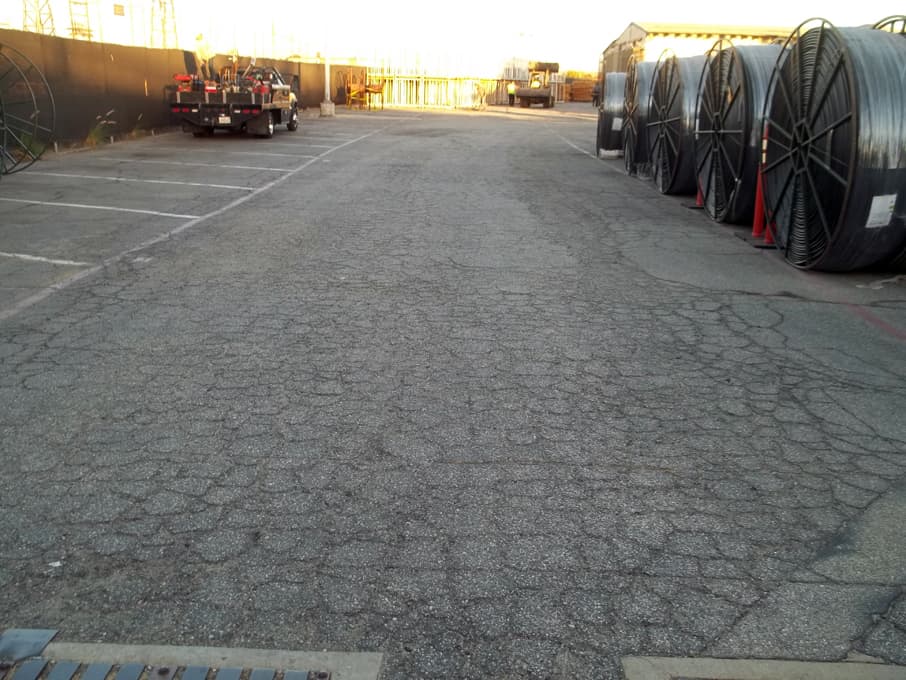
Joint and Longitudinal Cracks
Joint cracks form along the seams where two pavement sections meet during construction. These areas often have a lower asphalt density compared to the surrounding pavement, making them more susceptible to cracking. If the pavement mats fail to bond properly due to material or installation issues, longitudinal cracks can develop along these joints.
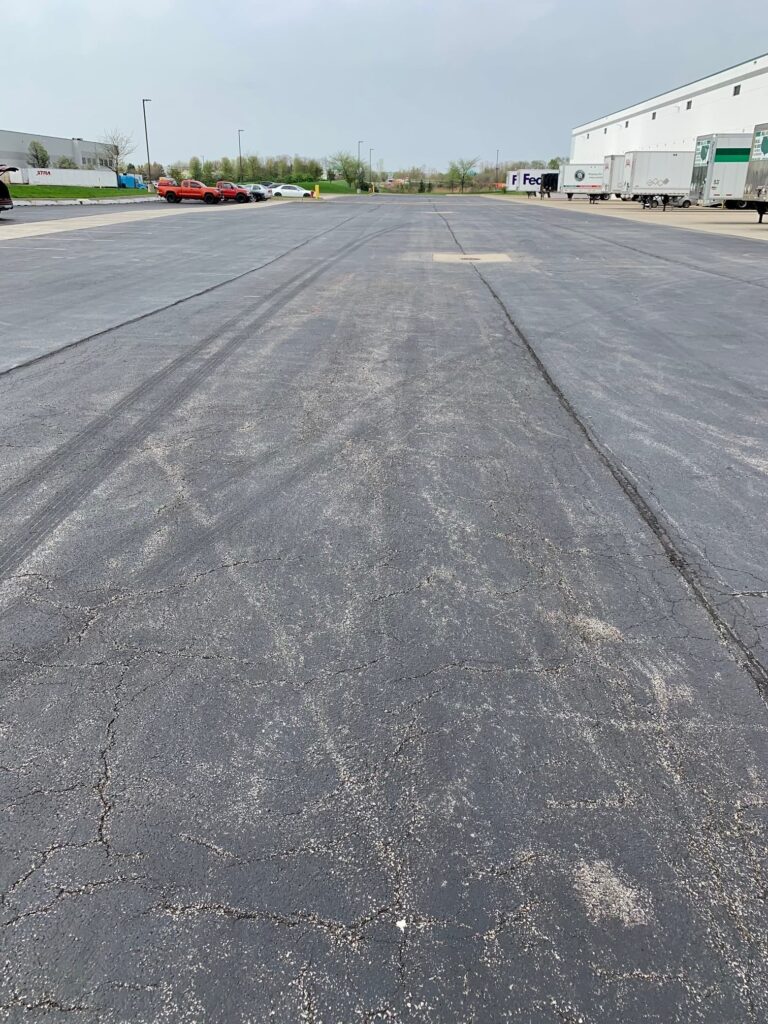
Block Cracks
Block cracking appears as a series of interconnected cracks forming square or rectangular patterns. In parking lots, one of the main causes is a lack of regular traffic, as steady vehicle movement helps keep asphalt flexible.. Other causes include air voids, low-penetration asphalt, or excessively high mix temperatures during installation.
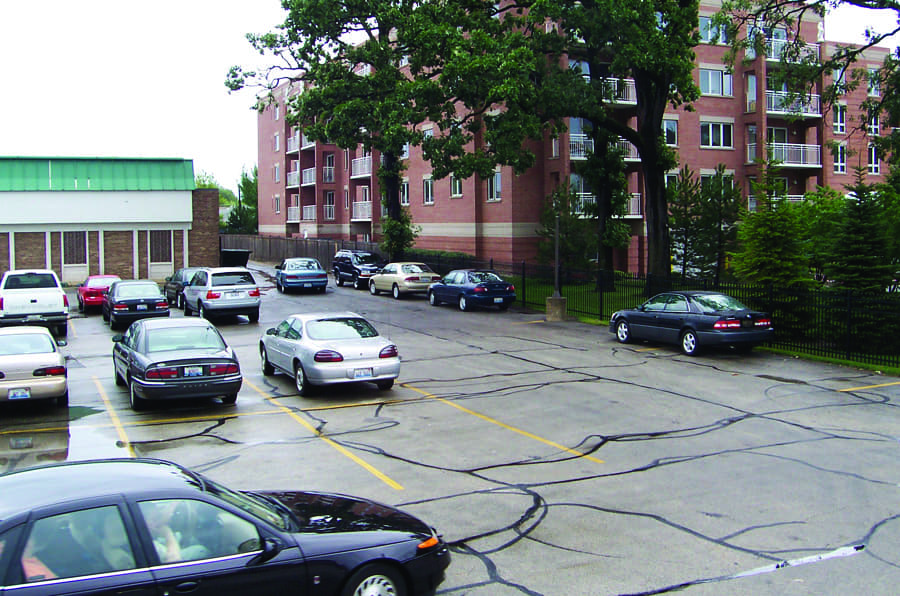
Edge Cracks
Edge cracks run parallel to the pavement’s outer edge, typically within 18 inches of the boundary. This type of crack in pavement is often caused by a weak base, inadequate shoulder support, poor drainage, or the effects of frost.
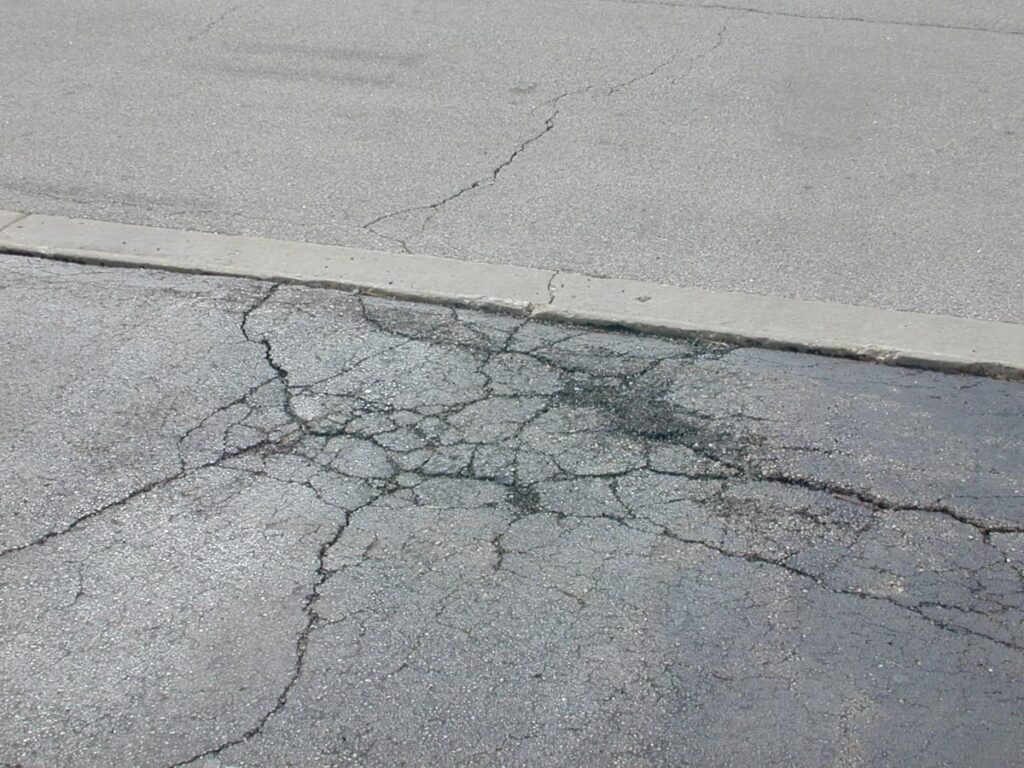
Slippage Cracks
Slippage cracks are crescent-shaped cracks that form due to heavy traffic that is braking, turning, or accelerating on an incline. These stresses cause a bond failure between the upper and lower pavement layers, often due to a contaminant between asphalt layers. The open end of the U-shaped crack always aligns with the direction of the applied force.
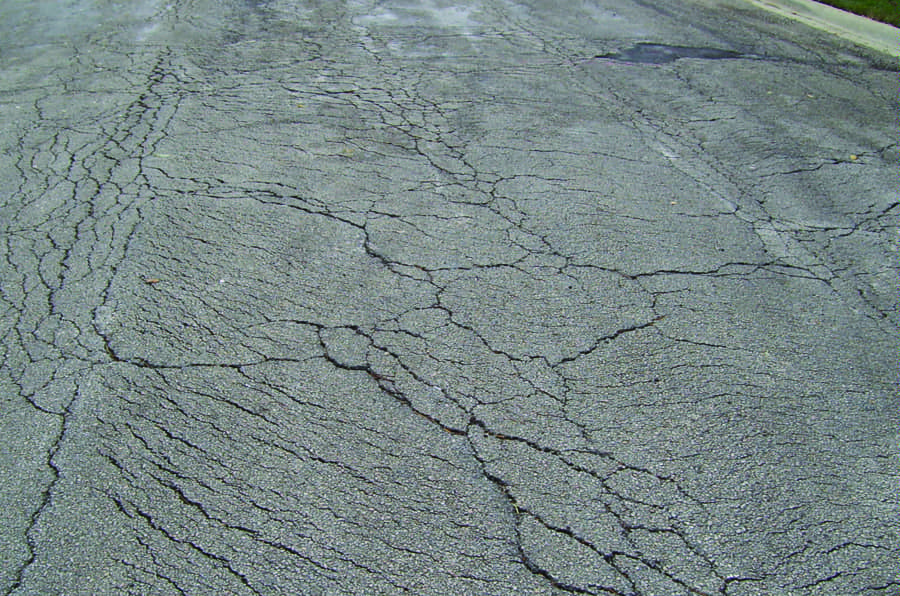
Repair Methods for Cracks in Asphalt
Properly attending to parking lot cracks and treating problems in a timely manner is cost effective, because it delays more expensive asphalt restoration such as resurfacing or reconstruction. To maintain pavement integrity, it’s recommended to allocate funds for crack sealing every 2 to 3 years.
Crack Sealing Method
For cracks between ¼ inch and 1 inch wide, crack sealing is an effective repair solution. This process involves:
- Cleaning the Cracks – A tow-behind air compressor removes dust and debris.
- Applying Sealant – Hot-pour material is injected into the crack using a hand-operated wand.
- Shaping the Seal – The sealant is spread into a band-aid configuration (3 to 5 inches wide and approximately 0.125 inches thick) to ensure durability.
The appropriate sealing method depends on factors such as crack type, traffic load, and budget.
Crack Routing & Sealing Method
For areas with heavy truck traffic, like industrial facilities, routing is recommended to improve adhesion and longevity. This process involves:
- Creating a Reservoir – A routing machine expands the crack, forming a ½-inch deep by ½-inch wide channel.
- Cleaning the Channel – The routed crack is cleared of dust and debris with a tow-behind air compressor
- Filling the Crack – Heated sealant is injected and flush-filled using a specialized wand tip.
Cracksealing Materials & Application
Hot-applied sealants must be prepared in specialized equipment, typically a double-boiler kettle with an inner chamber for mixing and an outer tank filled with heat transfer oil for even heating. Materials are heated to 375–400°F and may include:
- Rubberized asphalt – Modified with melted rubber for flexibility.
- Low-modulus rubberized asphalt – Designed for high-movement areas.
- Fiberized asphalt – Reinforced with fibers for added strength.
- Asphalt rubber – A mix of paving-grade asphalt cement and 15–30% reclaimed crumb rubber for enhanced performance.
By implementing the right crack repair method, property owners can extend pavement lifespan, reduce long-term pavement maintenance costs, and improve overall surface durability.
How Long Does Cracksealing Last?
While cracksealing may cost more than crack filling, it offers greater long-term value by significantly extending the lifespan of pavement—often lasting eight years or more.
How Often Should I Crackseal?
Rose Paving recommends sealing cracks between ¼ inch and 1 inch wide as part of a parking lot maintenance plan.
When is the Best Time for Cracksealing Pavement?
Rose Paving recommends scheduling preventative cracksealing during the spring and summer months for optimal results and long-term pavement protection.
How Do You Fix Cracks In Asphalt
Cracked and damaged asphalt isn’t just an eyesore—it can also pose safety risks and potential liability for property owners. If you notice pavement cracks around your commercial property, it’s time to take action.
Rose Paving provides expert crack repair solutions tailored to your needs. Our team will assess the damage, develop a customized maintenance plan, and efficiently repair or replace deteriorated asphalt to restore your pavement’s integrity. Contact Rose Paving today to get started.




